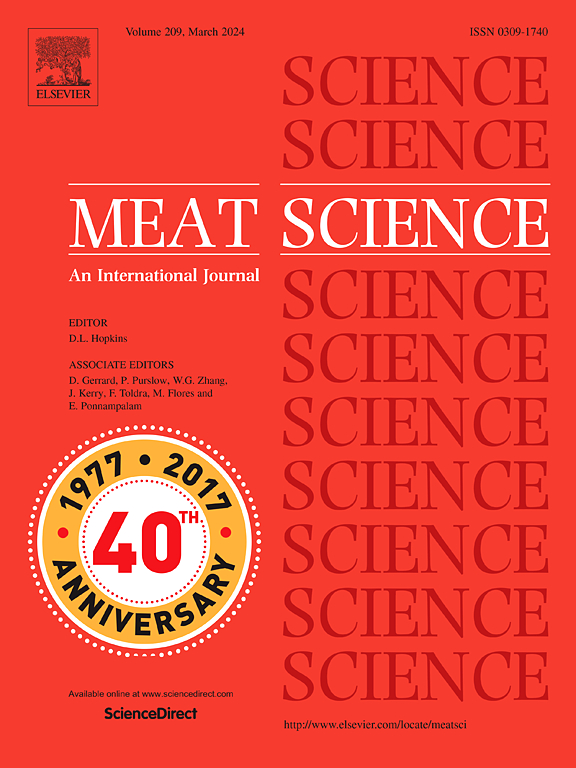Evaluating consumer willingness to pay for Chiloé lamb: The impact of geographical indication
IF 6.1
1区 农林科学
Q1 Agricultural and Biological Sciences
引用次数: 0
Abstract
Chiloé lamb was the first and only geographical indication for meat products from Chile. This study investigated consumer preferences and willingness to pay a premium for this unique product in a comprehensive survey of 630 respondents. A mixed-methods approach that combined quantitative surveys and qualitative interviews provided a detailed understanding of consumer behavior and perceptions. The results indicated that lamb consumption exhibits strong seasonality, which is closely associated with national holidays and vacations, particularly in urban centers such as Santiago and Concepción, where supermarkets are the main sources of lamb meat. Among the respondents, 56 % were willing to pay about 41 % more. That preference was particularly evident among young, independent workers who had higher-than-average incomes. For producers and retailers, however, a significant challenge remains in the form of limited consumer awareness because 78 % of respondents were unaware of the product. To address that challenge and effectively promote Chiloé lamb, robust marketing strategies including educational campaigns and targeted advertising, are imperative. Furthermore, enhancing consumer understanding of origin labeling might make it the primary factor in purchasing decisions, thereby increasing the value of these protected regional products.
评估消费者购买chilo羊肉的意愿:地理标志的影响
智利羊肉是智利肉制品的第一个也是唯一的地理标志。这项研究通过对630名受访者的全面调查,调查了消费者的偏好和为这种独特的产品支付溢价的意愿。结合定量调查和定性访谈的混合方法提供了对消费者行为和观念的详细了解。结果表明,羊肉消费表现出强烈的季节性,这与国家法定节假日密切相关,特别是在圣地亚哥和Concepción等城市中心,超市是羊肉的主要来源。在受访者中,56%的人愿意多支付约41%的费用。这种偏好在年轻、独立、收入高于平均水平的员工中尤为明显。然而,对于生产商和零售商来说,一个重大的挑战仍然是消费者意识有限,因为78%的受访者不知道该产品。为了应对这一挑战并有效地推广chilo羔羊,强有力的营销策略,包括教育活动和有针对性的广告,是必不可少的。此外,提高消费者对原产地标签的理解可能使其成为购买决策的主要因素,从而增加这些受保护区域产品的价值。
本文章由计算机程序翻译,如有差异,请以英文原文为准。
求助全文
约1分钟内获得全文
求助全文
来源期刊

Meat Science
工程技术-食品科技
CiteScore
12.60
自引率
9.90%
发文量
282
审稿时长
60 days
期刊介绍:
The aim of Meat Science is to serve as a suitable platform for the dissemination of interdisciplinary and international knowledge on all factors influencing the properties of meat. While the journal primarily focuses on the flesh of mammals, contributions related to poultry will be considered if they enhance the overall understanding of the relationship between muscle nature and meat quality post mortem. Additionally, papers on large birds (e.g., emus, ostriches) as well as wild-captured mammals and crocodiles will be welcomed.
 求助内容:
求助内容: 应助结果提醒方式:
应助结果提醒方式:


